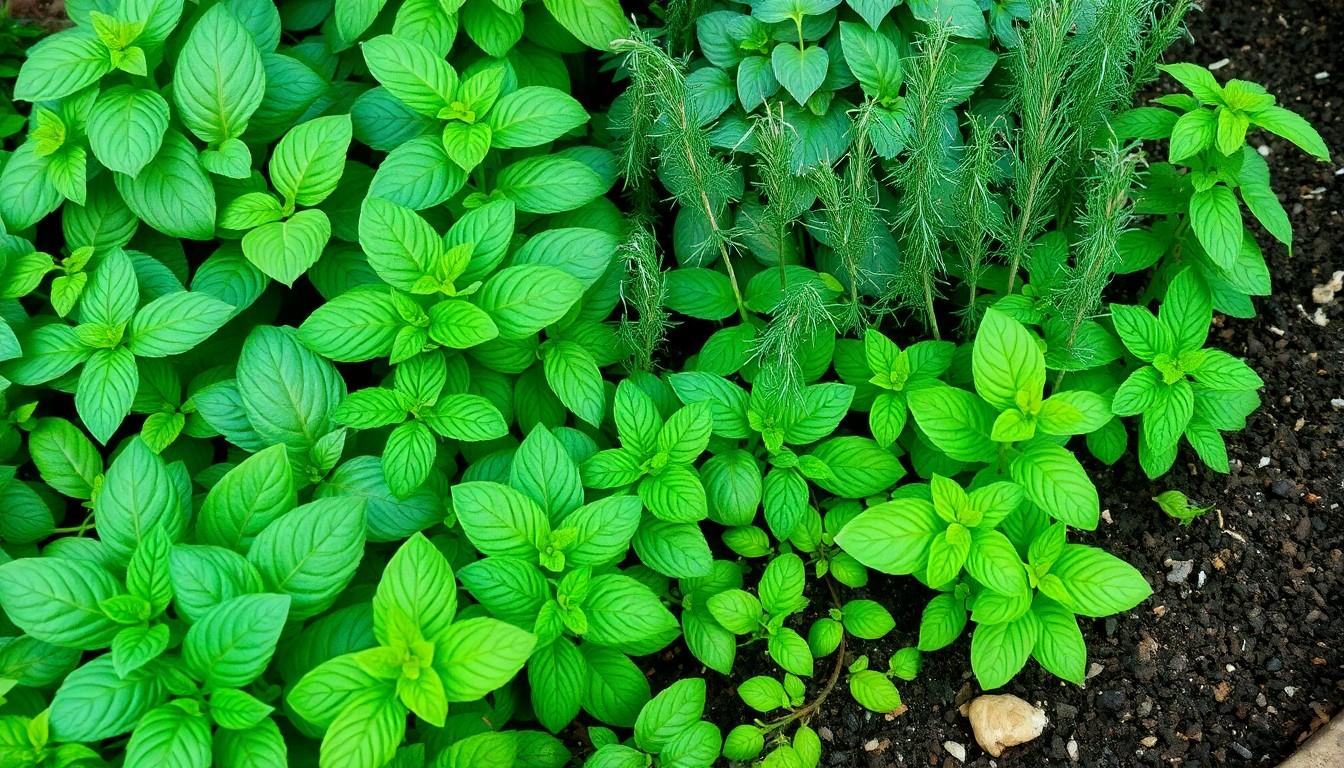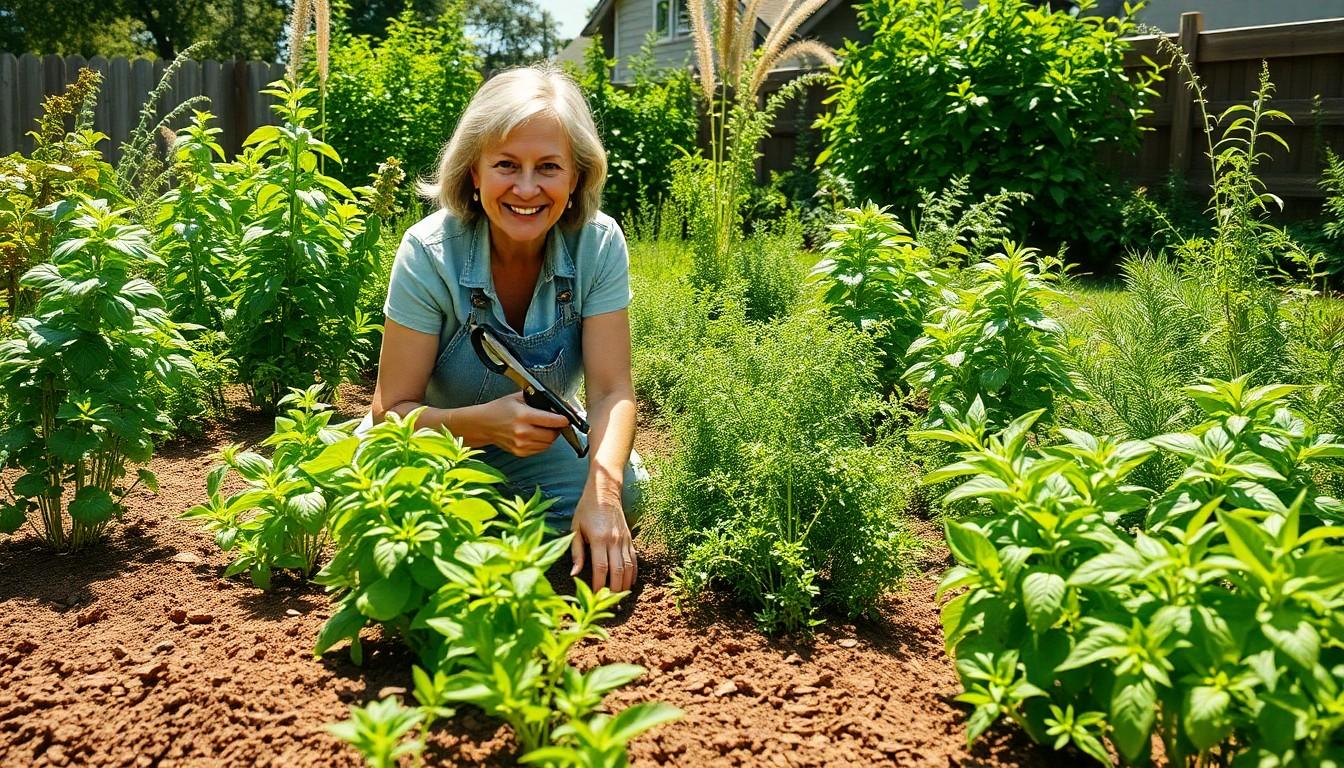Imagine stepping into your backyard and being greeted by a lush, green paradise filled with the aromatic scents of mother herbs. These powerhouse plants not only elevate culinary creations but also boost health and wellness. Cultivating mother herbs isn’t just for the seasoned gardener; it’s a delightful journey anyone can embark on.
mother herb cultivation
Mother herb cultivation focuses on growing essential herbs that yield benefits for culinary and health purposes. Numerous gardeners appreciate the advantages of cultivating these herbs in their backyards. Popular types include basil, mint, sage, and rosemary. Each of these herbs contributes unique flavors and nutritional values.
Cultivating mother herbs involves selecting the right location with ample sunlight and good soil drainage. Soil quality plays a crucial role in healthy growth. Gardeners often enrich their soil with compost or organic matter to boost nutrient levels. Watering should occur consistently while avoiding waterlogging, as excessive moisture can harm root systems.
Planting techniques vary by herb type. For instance, some herbs thrive when started from seeds, while others benefit from cuttings or transplants. Gardeners often choose to begin with young plants bought from nurseries for quicker results. Seasonality also affects growth cycles; many herbs flourish in warmer months, while some can endure cooler temperatures.
Maintaining a pest-free environment is vital in herb cultivation. Organic pest control methods, such as introducing beneficial insects or using natural sprays, help protect the plants without harming the environment. Regular harvesting encourages continued growth and prevents over-flowering, extending the herb’s productive life.
Knowledge of various mother herbs enhances kitchen creativity and overall wellness. Cooking with fresh herbs elevates dishes, providing vibrant flavors and aromas. Many also possess medicinal properties that support health. Gardeners often find that nurturing these herbs fosters a deeper appreciation for culinary arts and well-being.
Benefits of Cultivating Mother Herbs

Cultivating mother herbs offers numerous advantages for both culinary applications and health benefits. Gardeners find joy in growing these versatile plants.
Nutritional Value
Basil, mint, sage, and rosemary stand out for their high nutrient content. These herbs contain essential vitamins such as vitamin C and vitamin K. Each contributes antioxidants that combat oxidative stress. Basil provides minerals like magnesium, while mint offers dietary fiber that aids digestion. Rosemary contains anti-inflammatory compounds that support overall health. Their rich flavor enhances dishes without additional calories. Eating fresh herbs contributes to a balanced diet.
Medicinal Properties
Mother herbs possess various medicinal properties recognized in traditional and modern medicine. Basil displays antimicrobial attributes that help fight infections. Mint improves digestion and can relieve headaches through aromatherapy. Sage exhibits anti-inflammatory properties beneficial for sore throats. Rosemary enhances memory function and circulation when ingested. Each herb offers unique advantages that support health and wellness. Using these herbs in everyday cooking provides an easy way to harness their healing potential.
Best Practices for Mother Herb Cultivation
Cultivating mother herbs requires careful attention to detail. Following best practices ensures healthy growth and rich flavors.
Soil Preparation
Soil preparation lays the foundation for healthy mother herb cultivation. Use loamy soil with good drainage to prevent waterlogging. Incorporate organic compost before planting. The compost enriches nutrients and promotes beneficial microorganisms. Testing pH levels is also advisable, aiming for a range between 6.0 and 7.0 to ensure optimal nutrient availability. Regularly turning the soil aerates the content and prevents compaction. Selecting a well-prepared site enhances growth and overall yield.
Watering and Irrigation
Watering practices significantly impact herb health. Ensure a consistent moisture level without oversaturating the soil. Early morning watering helps reduce evaporation and disease risk. Drip irrigation systems offer efficiency by delivering water directly to the root zone. Avoid letting herbs dry out, especially during hot summer months, as this can stress the plants. Adjusting the watering frequency based on weather conditions keeps the herbs thriving. Monitoring signs of wilting allows for timely adjustments to the watering routine.
Common Mother Herbs to Cultivate
Cultivating mother herbs offers a variety of flavors and benefits. Each herb enhances culinary dishes and contributes to overall wellness.
Basil
Basil thrives in warm climates with plenty of sunlight. This aromatic herb enjoys rich, well-drained soil. Regular watering keeps the plants hydrated but avoids waterlogging. Basil is rich in vitamins K and A, promoting health. It also contains compounds with antimicrobial properties. Adding fresh basil to sauces or salads elevates flavor and nutrition. Harvest basil regularly to encourage new growth and prevent flowering.
Mint
Mint prefers partial shade and grows well in rich, moist soil. This versatile herb spreads quickly, so planting it in containers can prevent invasion. Mint aids in digestion and has soothing properties. Using mint in beverages or desserts adds a refreshing twist. Regular harvesting helps maintain the plant’s vigor and enhances leaf size and aroma. Ensuring consistent moisture allows mint to flourish throughout the growing season.
Oregano
Oregano is a sturdy herb that thrives in sunny, dry locations. It favors lean, well-drained soil and requires minimal watering. This herb is packed with antioxidants and has anti-inflammatory effects. Oregano’s robust flavor complements various dishes, particularly Italian cuisine. Regular trimming promotes bushier growth and extends its productive lifespan. Utilizing fresh oregano leaves in cooking enhances both taste and health benefits.
Challenges in Mother Herb Cultivation
Cultivating mother herbs presents several challenges that gardeners must navigate for successful growth.
Pest Management
Pests often pose significant risks to herb production. Insects like aphids and spider mites can damage plants if left untreated. Organic pest control methods, such as introducing beneficial insects like ladybugs or using insecticidal soaps, effectively reduce pest populations. Regular inspections of plant foliage help detect pests early. Employing companion planting can deter unwanted insects as well. Gardeners should also prioritize maintaining healthy plants, as robust herbs naturally resist pest infestations.
Weather Conditions
Weather fluctuations impact mother herb growth significantly. Herbs like basil favor warm temperatures and thrive when exposed to full sun. Cold temperatures can stunt growth or kill sensitive plants. For this reason, gardeners should monitor local weather forecasts during planting seasons. Incorporating protective measures like row covers during unexpected frosts keeps plants warm. Moreover, excessive rainfall can lead to root rot; good soil drainage mitigates this risk. Adapting planting schedules to avoid extreme weather events enhances herb cultivation’s success.
endeavor for any gardening enthusiast
Cultivating mother herbs offers a rewarding journey that enriches both the kitchen and personal well-being. By selecting the right herbs and understanding their unique needs, gardeners can create a thriving herb garden that not only enhances culinary dishes but also provides a wealth of health benefits.
Implementing best practices in soil preparation, watering, and pest management ensures successful growth while fostering a sustainable gardening environment. Regularly harvesting these herbs encourages continuous production and allows for creative culinary experimentation.
Ultimately, mother herb cultivation is more than just a gardening activity; it’s a pathway to a healthier lifestyle and a deeper connection to the food one prepares. Embracing this practice can lead to delicious meals and improved health, making it a worthwhile endeavor for any gardening enthusiast.

